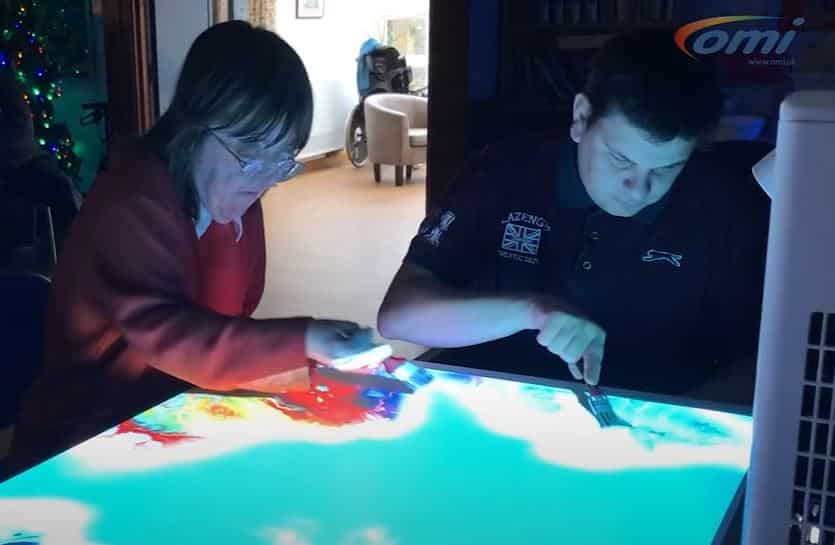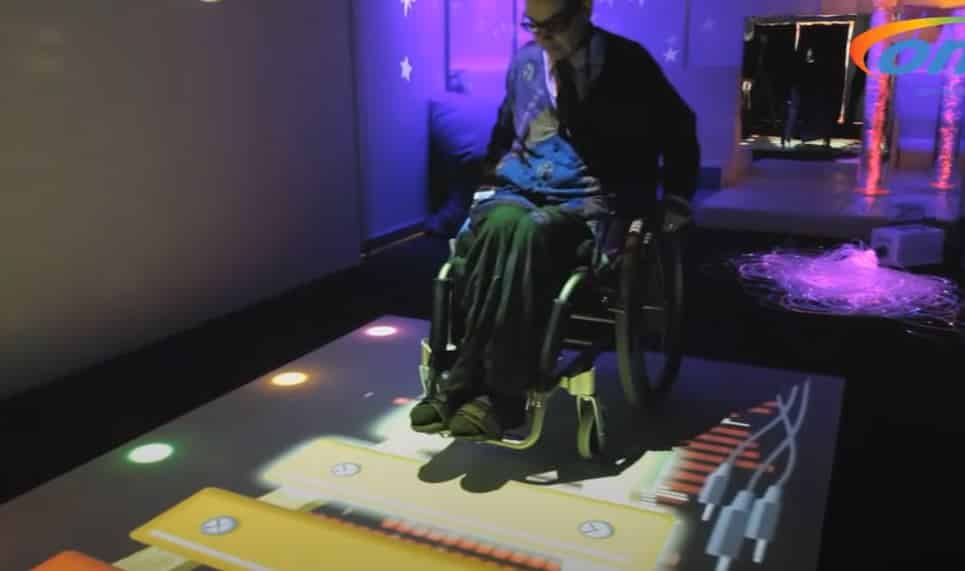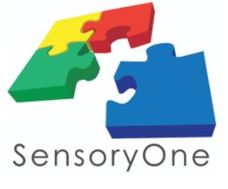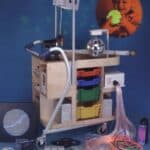
Interactive floor and table projectors are a technology that has recently gained popularity in elder care, autism, and dementia care settings. These projectors can project images onto the floor or table that can be interacted with by individuals, making them a highly engaging tool for those who may be experiencing sensory deficits or cognitive decline.
Explore the benefits of interactive floor and table projectors for those with special needs in elder care, autism, and dementia care.

The industry-leading OM Interactive Motion Activated projector system is used by centers serving special needs groups including seniors with dementia and children.
Exclusively sold and serviced by SensoryOne.
Elder Care
Interactive floor and table projectors can provide a range of benefits to those in elder care. One of the most significant benefits is that they can improve the quality of life for elderly residents by providing them with a stimulating and engaging environment. Many elderly individuals can become isolated and lonely, especially if they are living in a nursing home or assisted living facility. Interactive floor and table projectors can help combat this by providing an immersive and engaging experience that can be enjoyed alone or with others.
Interactive projectors can also be used as a therapeutic tool. For example, projections of nature scenes or animals can provide a calming and soothing effect on residents with anxiety or agitation. Projections of familiar places or objects can also help residents with memory loss to recall past experiences and improve their sense of self.
Autism
Interactive floor and table projectors have proven to be highly effective tools for individuals with autism. These projectors can help stimulate the senses and provide a multisensory experience that can be calming and comforting. For individuals with autism, who often struggle with social interaction and communication, interactive projectors can provide a safe and engaging way to interact with others.
Interactive projectors can also be used to provide therapy for individuals with autism. For example, projections of facial expressions or body language can help individuals with autism to better understand and interpret social cues. Projections of interactive games or activities can also help improve cognitive and motor skills. From children to seniors with autism, the benefits of interactive projection activities encourage communicative expression, physical movement and overall well being.
Dementia
Interactive floor and table projectors can also provide significant benefits to individuals with dementia. Many individuals with dementia can become agitated, anxious, or disoriented, especially in unfamiliar environments. Interactive projectors can help provide a sense of familiarity and comfort by projecting images of familiar places or objects.
Interactive projectors can also be used to provide reminiscence therapy for individuals with dementia. Projections of familiar scenes or objects can help trigger memories and improve the sense of self. Projections of interactive games or activities can also help stimulate cognitive and motor skills.
Sensory Stimulation for Special Needs is Vital
Interactive floor and table projectors can provide significant benefits to individuals in elder care, autism, and dementia care. These projectors can help improve the quality of life for individuals in these settings by providing a stimulating and engaging environment. They can also be used as therapeutic tools to provide a range of benefits, including improving memory, reducing anxiety, and improving social interaction and communication skills. Overall, interactive floor and table projectors are a powerful tool that can make a significant difference in the lives of individuals in elder care, autism, and dementia care.



